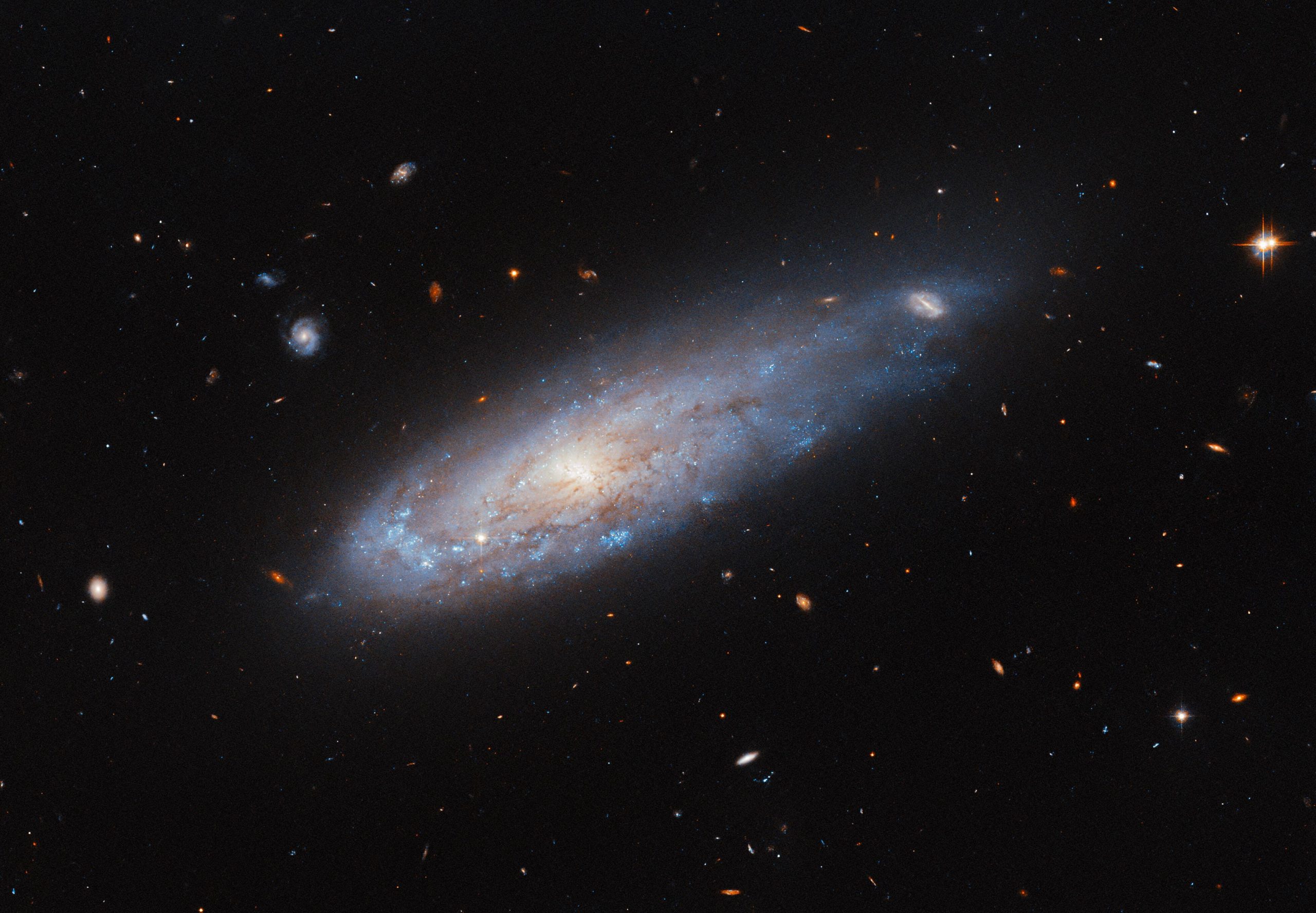

This week, the Hubble Space Telescope brings us the stunning image of IC 3225, a spiral galaxy soaring through the cosmos resembling a comet with a tail of gas.
The spiral galaxy featured in this stunning Hubble Space Telescope image is IC 3225. It looks as though it’s been shot from a cannon, racing through space like a comet, with a stream of gas trailing from its disk. Galaxies seen from Earth often create fascinating visual scenes: some appear to float serenely in the emptiness, while others display much more dynamic activity.
Dynamics of the Virgo Galaxy Cluster
Although appearances can be deceiving with objects so far from Earth — IC 3225 is approximately 100 million light-years away — its location helps explain this energetic demeanor. It is part of the Virgo galaxy cluster, which contains over 1,300 galaxies. The cluster’s dense population generates a hot, gas-filled environment known as the ‘intracluster medium.’ The immense gravitational mass of the cluster causes galaxies to orbit its center at incredibly high speeds. As galaxies like IC 3225 move through this thick intracluster medium, they experience ‘ram pressure,’ which strips gas from them as they travel through space.
Astronomical Forces and Galactic Transformations
IC 3225 is not so close to the cluster core right now, but astronomers have deduced that it has undergone this ram pressure stripping in the past. The galaxy looks as though it’s been impacted by this: it is compressed on one side and there has been noticeably more star formation on this leading edge, while the opposite end is stretched out of shape. Being in such a crowded field, a close call with another galaxy could also have tugged on IC 3225 and created this shape. The sight of this distorted galaxy is a reminder of the incredible forces at work on astronomical scales, which can move and reshape even entire galaxies!